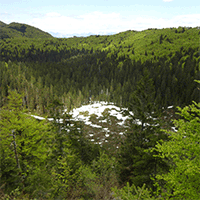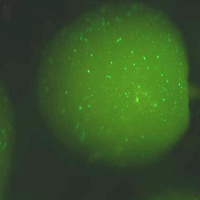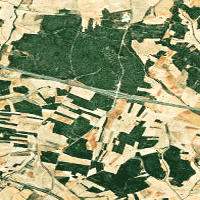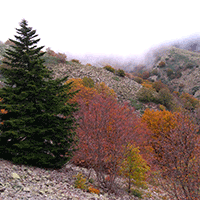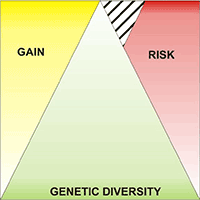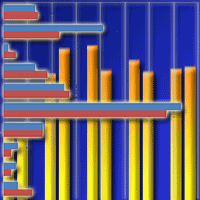
Comparative analysis of students’ attitudes toward implementation of genetically modified trees in Serbia
Marina Nonić (1), Uroš Radojević (2) , Jelena Milovanović (2), Marko Perović (1), Mirjana Šijačić-Nikolić (1)
iForest - Biogeosciences and Forestry, Volume 8, Issue 5, Pages 714-718 (2015)
doi: https://doi.org/10.3832/ifor1305-007
Published: Jan 08, 2015 - Copyright © 2015 SISEF
Technical Notes
Collection/Special Issue: COST Action FP0905
Biosafety of forest transgenic trees and EU policy directives
Guest Editors: Cristina Vettori, Matthias Fladung
Abstract
Genetically-modified (GM) trees represent a new frontier in biotechnology, though many environmental concerns associated to the commercial use of GM trees and their products have been recently raised. In general, GM trees involve no safety issues related to human health, therefore public attitudes toward their commercial use should depend on environmental concerns or personal philosophical viewpoints, but also on educational level and background. To assess the relevance of the educational level and background on attitudes toward acceptance of commercial GM tree cultivation, a survey was conducted in January 2014 among 400 students from the Faculty of Forestry of the University of Belgrade and from the Faculty of Applied Ecology “Futura” at the University Singidunum (Belgrade). The aim was to determine whether different educational profiles and educational level significantly affect students’ attitudes toward GM trees. Results showed no significant differences in the responses among students from both faculties. All students showed a good knowledge of GM trees and agreed that different genetic modifications of forest trees would be very important for their country. Also, more than a half of students from both faculties would agree with commercial planting of GM trees and would purchase their final products. However, 70 to 90% of students from both faculties considered the hazards associated with the commercial use of GM trees as “serious hazard” or “slight hazard”. The implication of the above results are discussed.
Keywords
Authors’ Info
Authors’ address
Marko Perović
Mirjana Šijačić-Nikolić
Faculty of Forestry, University of Belgrade, Belgrade (Serbia)
Jelena Milovanović
Faculty of Applied Ecology “Futura”, Singidunum University, Belgrade (Serbia)
Corresponding author
Paper Info
Citation
Nonić M, Radojević U, Milovanović J, Perović M, Šijačić-Nikolić M (2015). Comparative analysis of students’ attitudes toward implementation of genetically modified trees in Serbia. iForest 8: 714-718. - doi: 10.3832/ifor1305-007
Academic Editor
Elena Paoletti
Paper history
Received: Apr 03, 2014
Accepted: Aug 09, 2014
First online: Jan 08, 2015
Publication Date: Oct 01, 2015
Publication Time: 5.07 months
Copyright Information
© SISEF - The Italian Society of Silviculture and Forest Ecology 2015
Open Access
This article is distributed under the terms of the Creative Commons Attribution-Non Commercial 4.0 International (https://creativecommons.org/licenses/by-nc/4.0/), which permits unrestricted use, distribution, and reproduction in any medium, provided you give appropriate credit to the original author(s) and the source, provide a link to the Creative Commons license, and indicate if changes were made.
Web Metrics
Breakdown by View Type
Article Usage
Total Article Views: 50572
(from publication date up to now)
Breakdown by View Type
HTML Page Views: 43070
Abstract Page Views: 2829
PDF Downloads: 3241
Citation/Reference Downloads: 20
XML Downloads: 1412
Web Metrics
Days since publication: 3991
Overall contacts: 50572
Avg. contacts per week: 88.70
Citation Metrics
Article Citations
Article citations are based on data periodically collected from the Clarivate Web of Science web site
(last update: Mar 2025)
Total number of cites (since 2015): 8
Average cites per year: 0.73
Publication Metrics
by Dimensions ©
Articles citing this article
List of the papers citing this article based on CrossRef Cited-by.
References
Preliminary review of biotechnology in forestry, including genetic modification. United Nations, Food and Agriculture Organization, Rome, Italy, pp. 118.
Gscholar
Genetically engineered trees for plantation forests: key considerations for environmental risk assessment. Plant Biotechnology Journal 11: 785-798.
CrossRef | Gscholar
Global climate changes and forest genetic resources conservation. In: Proceedings of the International Conference “Sustainable use of forest ecosystems. The Challenge of the 21st Century”. Donji Milanovac (Serbia) 8-10 November 2006. Book of abstract, pp. 142.
Gscholar



